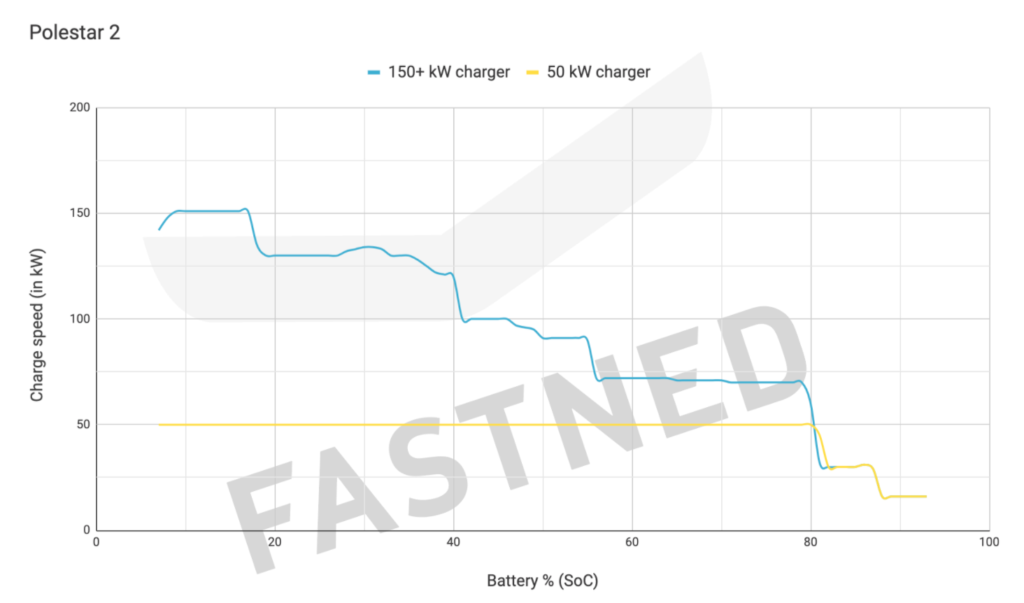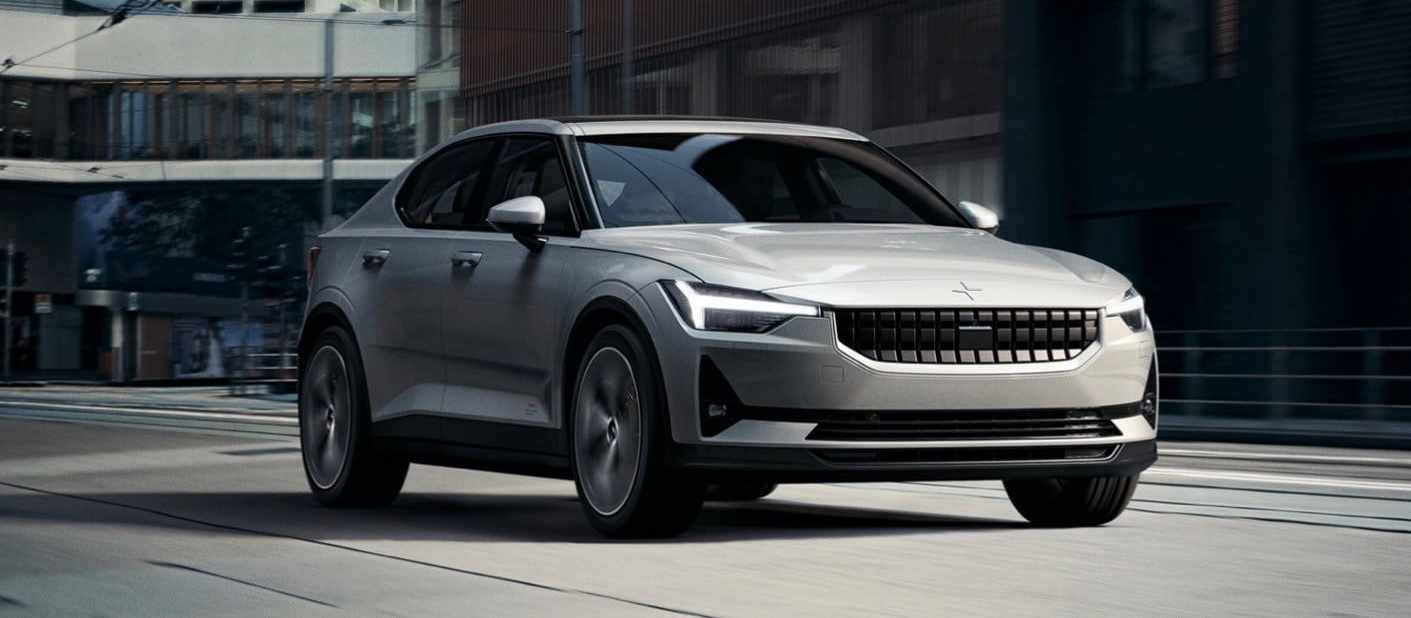After the Volkswagen ID.3 Pro Performance, today, it is the turn of another newcomer: the Polestar 2. How does this premium sedan, considered by the international press as the first direct rival of the successful Tesla Model 3, the electric car, out perform the best selling EV on the planet?
The maximum power admitted by the model in direct current is 150 kW, a peak that, however, is only capable of maintaining up to 17% load. From there, it begins to descend, but not in a linear way, but stages. Regardless, it remains at around 130 kW to almost 40%, and above 70 kW to 80%, a pretty good figure.
At a 50 kW point, the Polestar 2 stays stuck in that power up to 80% load. As can be seen, this is a vehicle that, although it has a competitive charging curve compared to most electric cars on the market, does not manage to match the Tesla Model 3, which reaches a peak of 250 kW in its Long Range versions.

At a point of more than 150 kW of power, the Polestar 2 is capable of recovering 60 miles in 10 minutes. To reach the same figure at a 50 kW point, the vehicle needs about 30 minutes. Therefore, and like many latest electric models, comfortably traveling with the Polestar 2 is entirely feasible as long as a fast-charging network is extensive enough to support it.
The Polestar 2 began its deliveries in Europe this summer, achieving enormous acceptance in markets such as Sweden or Norway. However, this good performance has been somewhat overshadowed by a widespread failure regarding its 12-volt electrical system, which has caused several dozen of units to be completely inoperative for a month.
Despite everything, the sales prospects are good. Polestar currently only sells the top-of-the-range version of the vehicle, with a starting price of more than $59,900 and equipped with a 78 kWh battery allowing it to achieve a range of 292 miles, a 408 powertrain CV (300 kW), and 660 Nm formed by two engines (which gives it all-wheel drive and a 0 to 100 km/h in 4.7 seconds).

